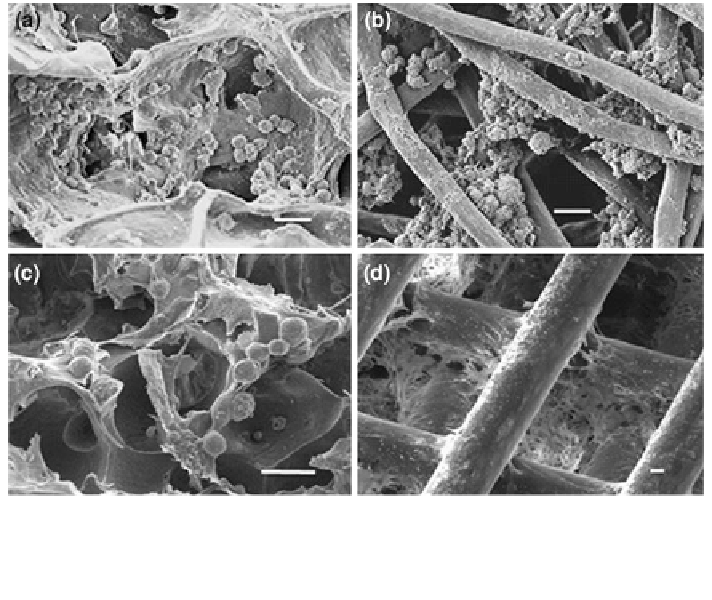Biomedical Engineering Reference
In-Depth Information
Fig. 1 Scanning electron micrographs of porous scaffolds seeded with cartilage cells. The scale
bar equals 20 lm in all figures. a Polyurethane foam, b non-woven fiber mesh derived from
hyaluronic acid, c polyurethane structure with regular spherical pores and d polystyrene regular
grid. A coloured version of this figure is available on the online version of the topic
- Cellular scale: it is the scale at which cells cannot be treated as a continuum,
but must be treated as single discrete entities. Its characteristic length is of the
order of microns.
- Sub-cellular scale: it is the scale accounting for all the mass transport and
reaction processes that occur at the single cell membrane level. Its characteristic
length is of the order of some nanometers.
We present here below a possible mathematical framework for the description
of the bio-physical phenomena occurring in a bioreactor for tissue engineering. Let
X be the bioreactor domain, composed by the time-invariant subdomains X
sc
,
representing a non-biodegradable scaffold, and by its complement X
e
. This latter
subdomain is, in turn, composed of a fluid portion X
fl
(t) and a biomass portion
X
b
(t), both depending on time t. Notice that both X
fl
and X
b
may be, in general,
composed by the union of complex, unconnected domains. The full scale approach
consists of the coupled solution of the following multiphysics system:
1. model for nutrient concentration: find c = c(x,t) in X
e
such that
o
c
ot
þr
D
r
c
þ
vc
ð
Þ ¼
Q
ðÞ
ð
1
Þ

Search WWH ::

Custom Search